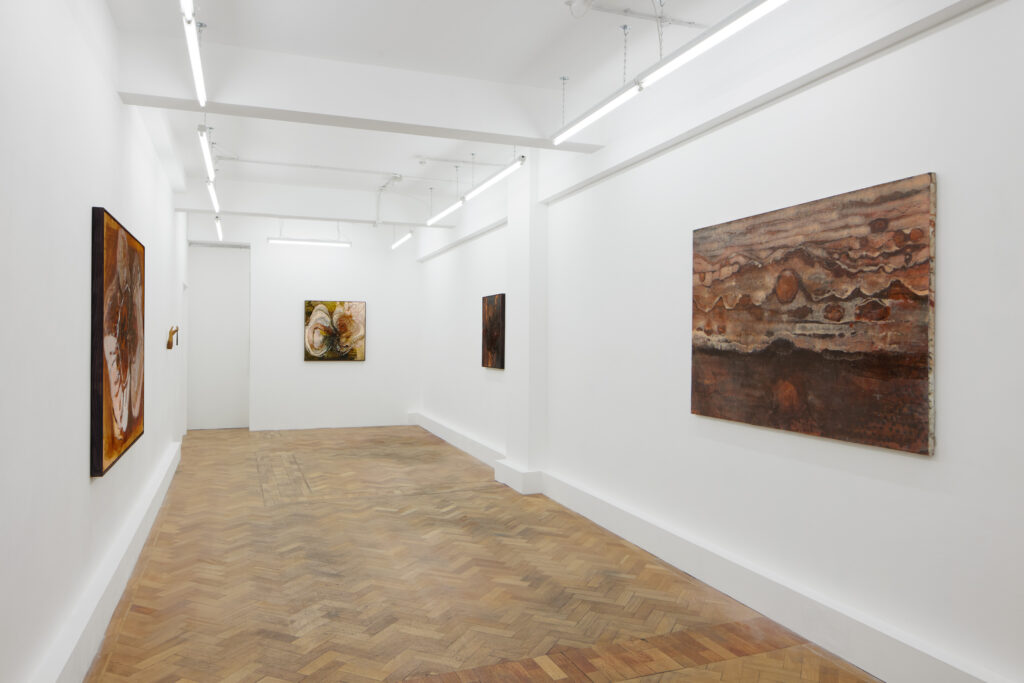
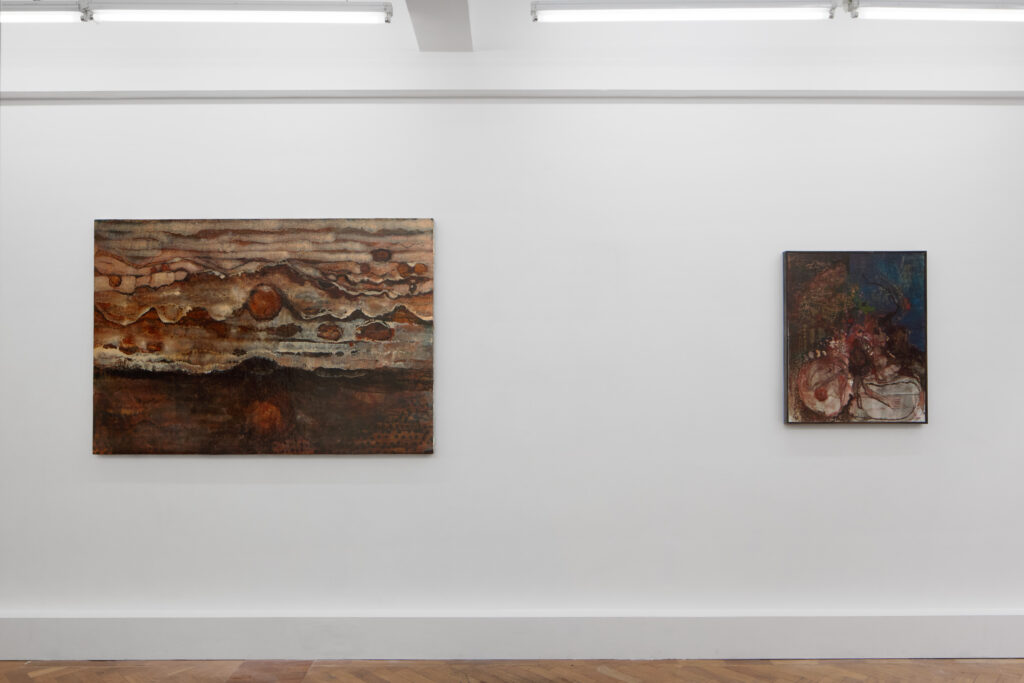
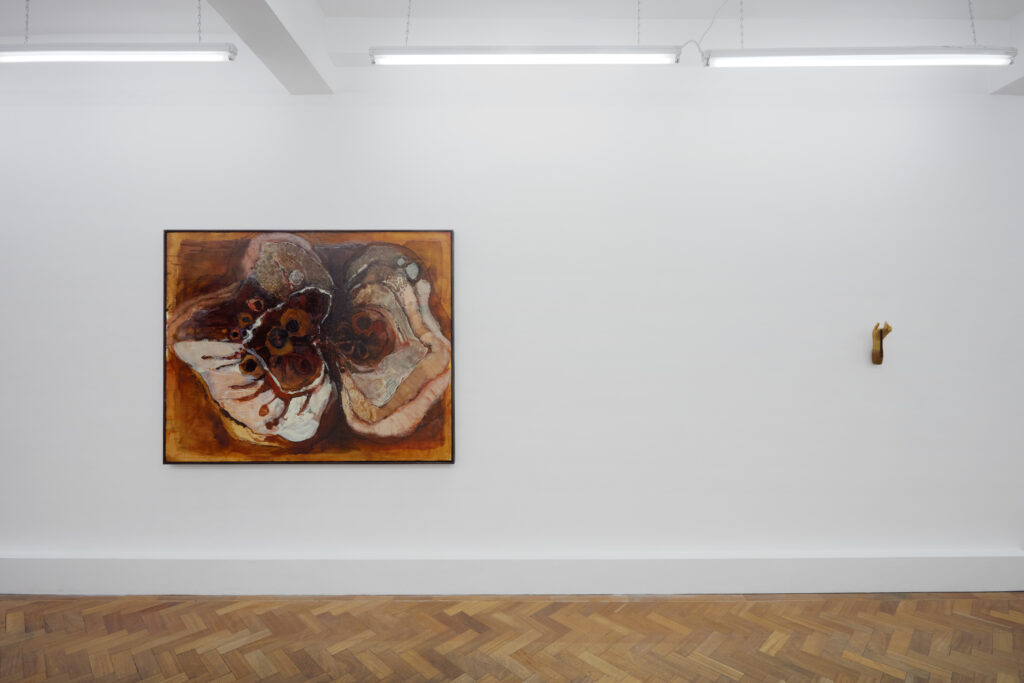
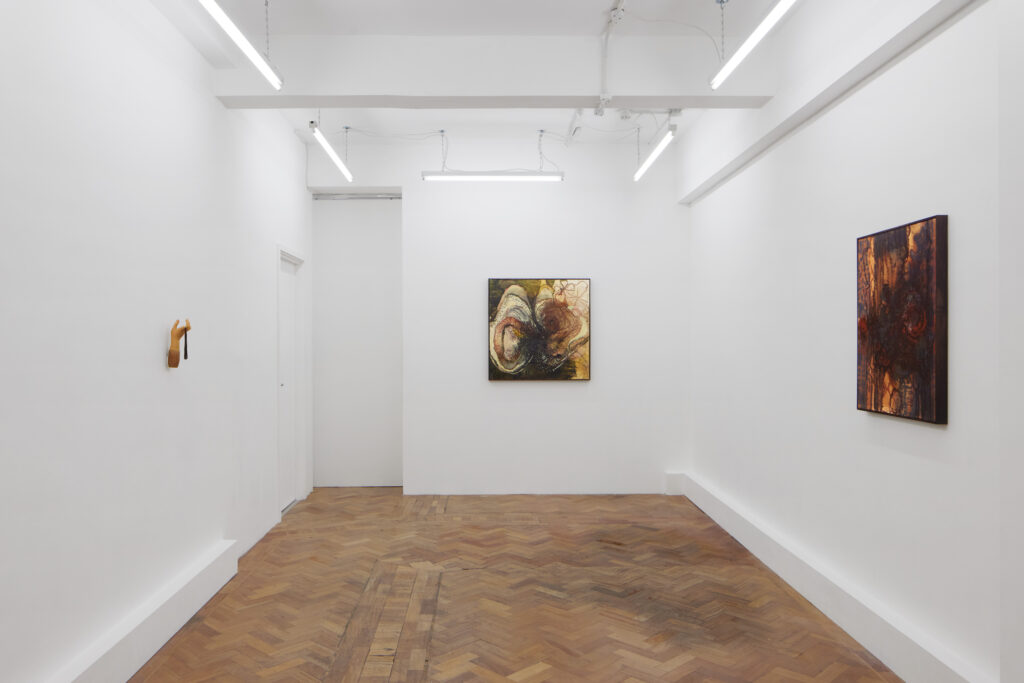
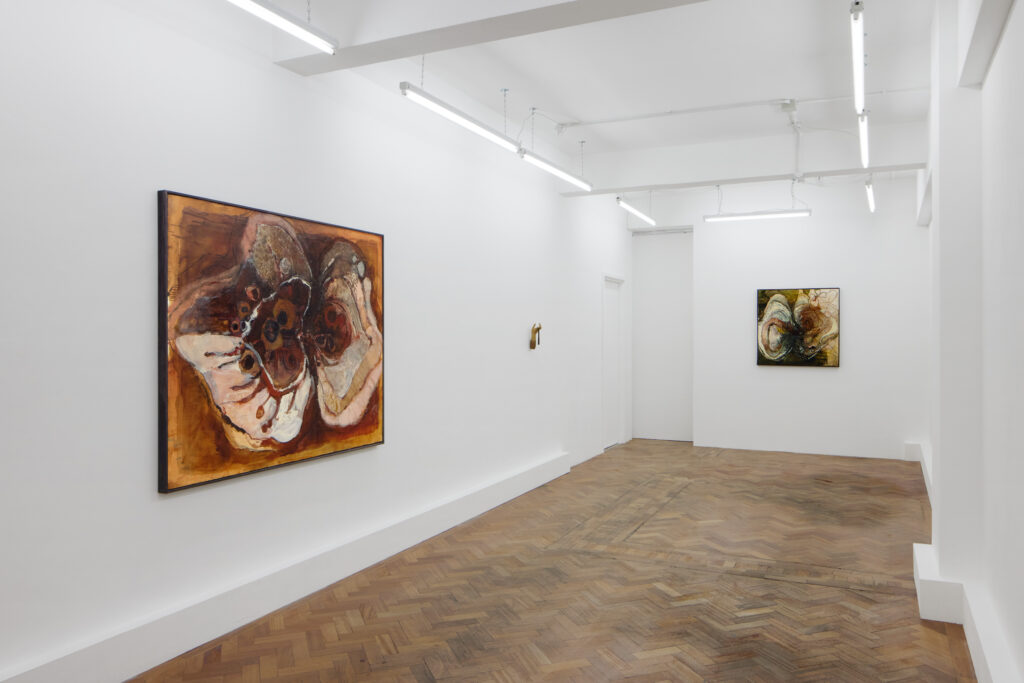
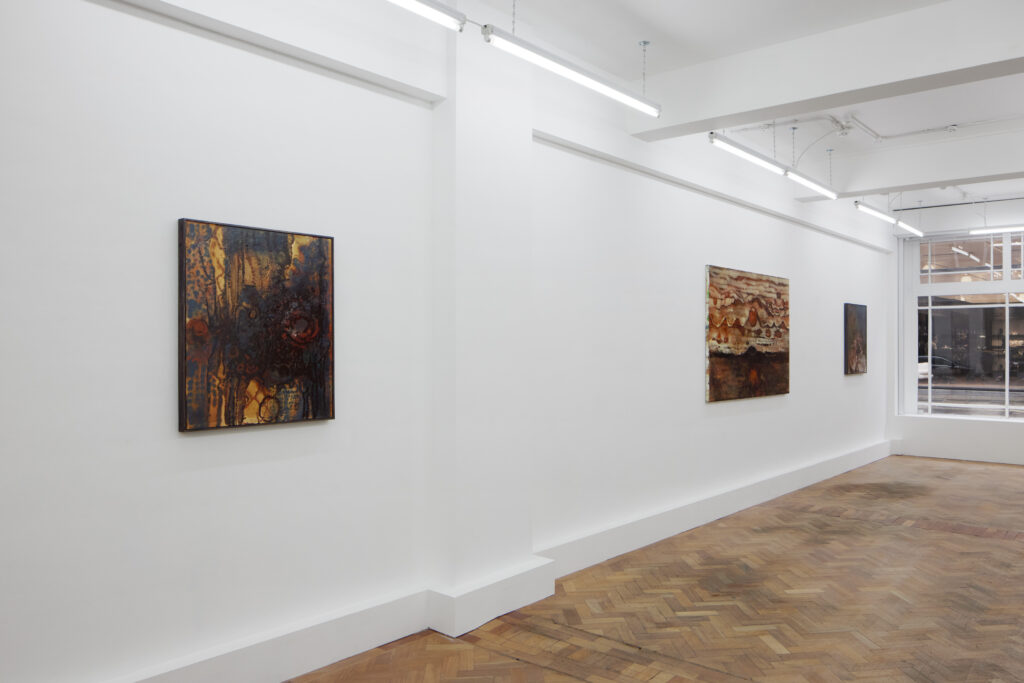

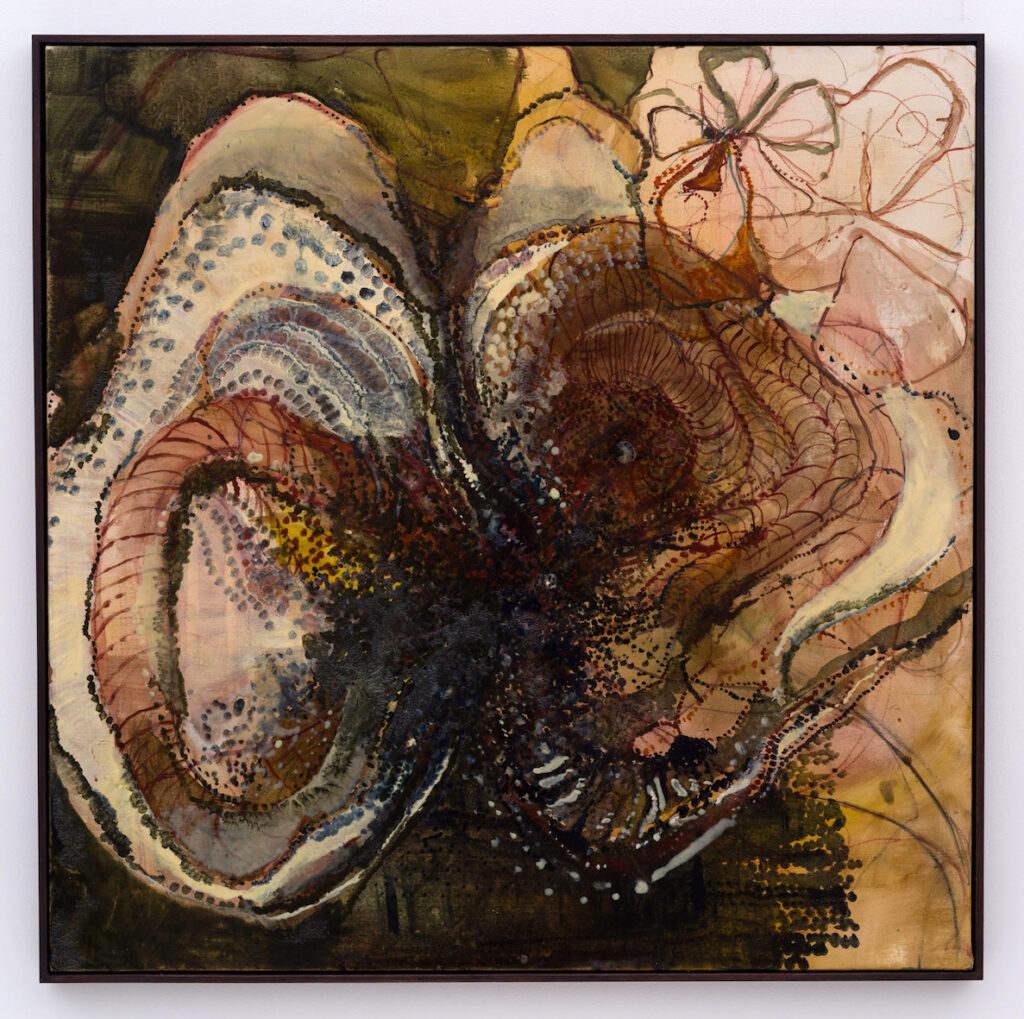

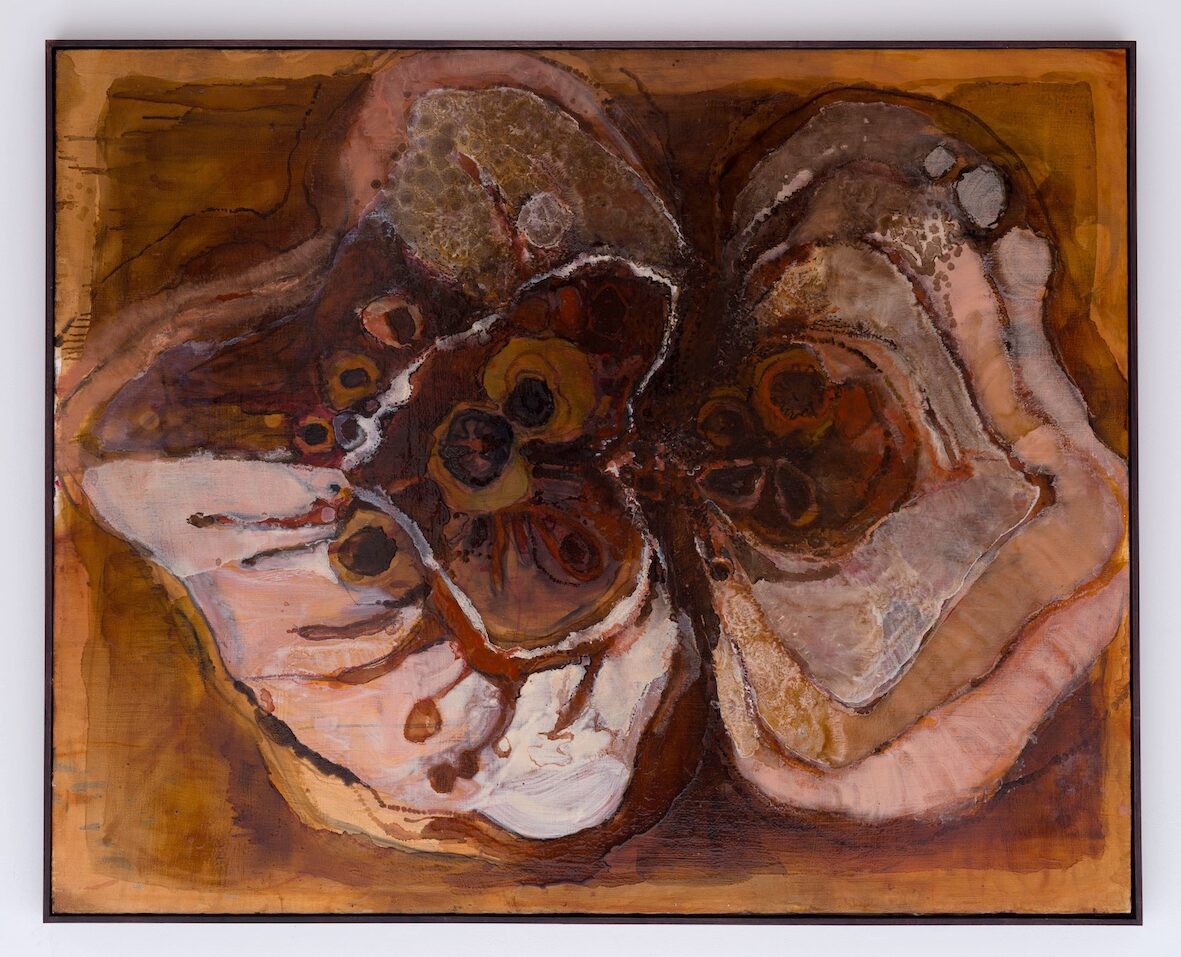

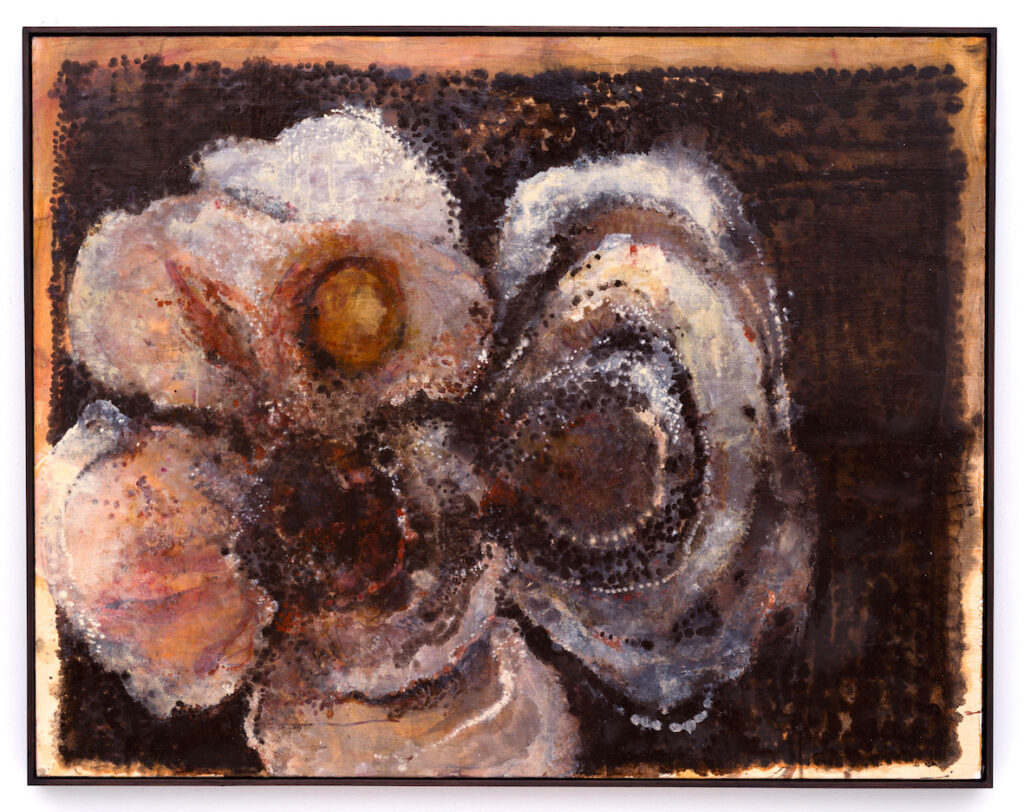
The navigation of physical space is contingent on the psychological space we inhabit. Reina Sugihara explores the psychological dimensions of the physical by using objects to tap into specific memories of times and places. In her practice, Sugihara embarks on a focused and repetitive engagement with the object. This relationship creates an abstraction of objects’ spatial and emotional memories—translating them into paintings through a committed process of layering and experimentation.
Building up multiple layers of highly viscous oil paint and paint mediums over time, oscillating between transparency and concealment, Sugihara engages in an intimate play on the expanded macrocosm from which everything exists, and the interior existence contained within each moment and detail. The works in this exhibition flip between landscape and microscopic, or innermost still life. The layering and texture of the paint causes the paintings to have an unending radiance, an otherworldly sheen that disrupts the anticipated flatness of an image.
For this series, Sugihara has been working with a small model of the human pancreas and a 17th century anatomical drawing of the digestive organs. These silent collaborators, present in the artist’s studio, do not wish to be represented in the works. Instead, they form a transistor between the artist and her canvas, both absorbing and reflecting the emotions they elicit. Mediating on these objects Sugihara embarks on a process of weaving together memories, the world, and the feelings attached to them. The island of the title refers to the Island of Langerhans (within the pancreas). This island is a cluster of cell-islands coexisting within the body—with unique functions aimed towards a common end or purpose, individual yet connected, not unlike the artist and her objects. The paintings are a process-based abstraction that is as much focused on physical act and gesture as it is an experiment of the psyche.
The objects chosen by the artist are definite, specific to her life and chosen for their ability to serve as a trigger for her personal memories. In this series the artist has tapped into the anatomical not only through her own complex feelings to the objects, but also through an organic application of line and form, eschewing the body-mind separation of Cartesian dualism encountered within large portions of mainstream culture. Imbued with the experiential, these works circumvent the sterile associations often given to such objects. Created directly on the floor, the paintings’ orientations only reveal themselves once the works are done. Skewed from directly representational, these works become more than the objects they ruminate on, instead suggesting a constant movement between environments and moods.